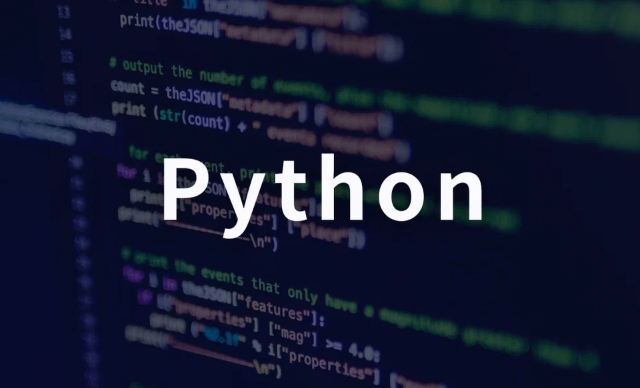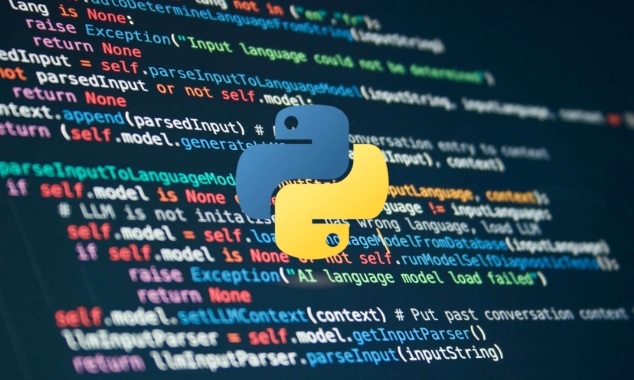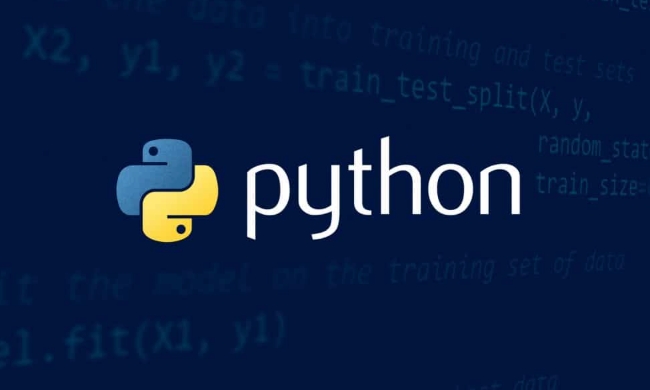NLTK is suitable for beginners of NLP. It is simple to install and provides a complete corpus and clear interface. It can complete basic tasks such as word segmentation, part-of-speech annotation, naming entity recognition, etc. The usage process includes installing pip install nltk, downloading corpus such as punkt and wordnet, importing modules and calling functions to process text, such as word_tokenize to implement word segmentation, pos_tag for part-of-speech annotation; it also supports stop word filtering, word form restoration and other functions, but attention should be paid to problems such as text preprocessing and weak Chinese support. It is recommended to use spaCy or transformers for large-scale processing.

When learning Python to do natural language processing, the first library that many people come into contact with is NLTK. While it is not the latest and fastest tool, as a starter, NLTK provides a complete corpus and clear interfaces that are perfect for laying the foundation.

Installation and basic use
The installation of NLTK is very simple, you can do it with pip:
pip install nltk
After installation, you also need to download the corpus. When you use it for the first time, you can run nltk.download() and then select which corpus packages to download in the pop-up interface. Common ones such as punkt , averaged_perceptron_tagger , wordnet , etc. are commonly used, and it is recommended to install them.

The basic usage process is usually:
- Import nltk
- Load corpus or process text
- Call related functions to complete tasks
For example, participle:

import nltk from nltk.tokenize import word_tokenize text = "Natural Language Processing with Python is fun." tokens = word_tokenize(text) print(tokens)
The output will be:
['Natural', 'Language', 'Processing', 'with', 'Python', 'is', 'fun', '.']
Common functions introduction
NLTK supports many basic tasks of NLP, such as:
- Tokenization : Splitting sentences into words or phrases
- Part of speech annotation (POS Tagging) : determine what kind of speech each word is
- Named entity recognition (NER) : identify person names, place names, organization names, etc.
- Lemmatization : Restore words to root form
- Stopwords Removal : Remove common meaningless words
For example, part-of-speech annotation can be written like this:
from nltk import pos_tag
pos_tag(word_tokenize("She runs every morning."))The output is similar:
[('She', 'PRP'), ('runs', 'VBZ'), ('every', 'DT'), ('morning', 'NN'), ('.', '.')]
Practical tips and precautions
Some details are easily overlooked, but affect the quality of the result:
- Text preprocessing is very important : for example, turning lowercase, de-punctuation, and filtering space words
- Different corpus is suitable for different tasks : for example,
punktis used for sentence segmentation,wordnetis used for word meaning query - Chinese support is weak : NLTK is mainly aimed at English, and it is recommended to use jieba or spaCy transformers in Chinese processing.
- Performance is not optimal : if you are doing large-scale text processing, consider using spaCy or transformers
For example, tips for filtering out stop words:
from nltk.corpus import stopwords stop_words = set(stopwords.words('english')) filtered = [w for w in tokens if w.lower() not in stop_words]
Who is suitable for use?
NLTK is more suitable for:
- Students who are just starting to study NLP
- People who need to understand the basic NLP process
- Used in teaching or experimental projects
If you already have a certain foundation, or need to handle a large number of text, Chinese, or deep learning tasks, you can consider using spaCy, transformers, or HuggingFace libraries.
Basically that's it. Although NLTK is a little older, it is quite easy to use for getting started. Many concepts are packaged more clearly. It is easier to understand the principles after using it and then switching to other tools.
The above is the detailed content of Natural Language Processing with Python NLTK. For more information, please follow other related articles on the PHP Chinese website!

Hot AI Tools

Undress AI Tool
Undress images for free

Undresser.AI Undress
AI-powered app for creating realistic nude photos

AI Clothes Remover
Online AI tool for removing clothes from photos.

Clothoff.io
AI clothes remover

Video Face Swap
Swap faces in any video effortlessly with our completely free AI face swap tool!

Hot Article

Hot Tools

Notepad++7.3.1
Easy-to-use and free code editor

SublimeText3 Chinese version
Chinese version, very easy to use

Zend Studio 13.0.1
Powerful PHP integrated development environment

Dreamweaver CS6
Visual web development tools

SublimeText3 Mac version
God-level code editing software (SublimeText3)

Hot Topics
 Polymorphism in python classes
Jul 05, 2025 am 02:58 AM
Polymorphism in python classes
Jul 05, 2025 am 02:58 AM
Polymorphism is a core concept in Python object-oriented programming, referring to "one interface, multiple implementations", allowing for unified processing of different types of objects. 1. Polymorphism is implemented through method rewriting. Subclasses can redefine parent class methods. For example, the spoke() method of Animal class has different implementations in Dog and Cat subclasses. 2. The practical uses of polymorphism include simplifying the code structure and enhancing scalability, such as calling the draw() method uniformly in the graphical drawing program, or handling the common behavior of different characters in game development. 3. Python implementation polymorphism needs to satisfy: the parent class defines a method, and the child class overrides the method, but does not require inheritance of the same parent class. As long as the object implements the same method, this is called the "duck type". 4. Things to note include the maintenance
 Python Function Arguments and Parameters
Jul 04, 2025 am 03:26 AM
Python Function Arguments and Parameters
Jul 04, 2025 am 03:26 AM
Parameters are placeholders when defining a function, while arguments are specific values ??passed in when calling. 1. Position parameters need to be passed in order, and incorrect order will lead to errors in the result; 2. Keyword parameters are specified by parameter names, which can change the order and improve readability; 3. Default parameter values ??are assigned when defined to avoid duplicate code, but variable objects should be avoided as default values; 4. args and *kwargs can handle uncertain number of parameters and are suitable for general interfaces or decorators, but should be used with caution to maintain readability.
 Explain Python generators and iterators.
Jul 05, 2025 am 02:55 AM
Explain Python generators and iterators.
Jul 05, 2025 am 02:55 AM
Iterators are objects that implement __iter__() and __next__() methods. The generator is a simplified version of iterators, which automatically implement these methods through the yield keyword. 1. The iterator returns an element every time he calls next() and throws a StopIteration exception when there are no more elements. 2. The generator uses function definition to generate data on demand, saving memory and supporting infinite sequences. 3. Use iterators when processing existing sets, use a generator when dynamically generating big data or lazy evaluation, such as loading line by line when reading large files. Note: Iterable objects such as lists are not iterators. They need to be recreated after the iterator reaches its end, and the generator can only traverse it once.
 Python `@classmethod` decorator explained
Jul 04, 2025 am 03:26 AM
Python `@classmethod` decorator explained
Jul 04, 2025 am 03:26 AM
A class method is a method defined in Python through the @classmethod decorator. Its first parameter is the class itself (cls), which is used to access or modify the class state. It can be called through a class or instance, which affects the entire class rather than a specific instance; for example, in the Person class, the show_count() method counts the number of objects created; when defining a class method, you need to use the @classmethod decorator and name the first parameter cls, such as the change_var(new_value) method to modify class variables; the class method is different from the instance method (self parameter) and static method (no automatic parameters), and is suitable for factory methods, alternative constructors, and management of class variables. Common uses include:
 How to handle API authentication in Python
Jul 13, 2025 am 02:22 AM
How to handle API authentication in Python
Jul 13, 2025 am 02:22 AM
The key to dealing with API authentication is to understand and use the authentication method correctly. 1. APIKey is the simplest authentication method, usually placed in the request header or URL parameters; 2. BasicAuth uses username and password for Base64 encoding transmission, which is suitable for internal systems; 3. OAuth2 needs to obtain the token first through client_id and client_secret, and then bring the BearerToken in the request header; 4. In order to deal with the token expiration, the token management class can be encapsulated and automatically refreshed the token; in short, selecting the appropriate method according to the document and safely storing the key information is the key.
 What are Python magic methods or dunder methods?
Jul 04, 2025 am 03:20 AM
What are Python magic methods or dunder methods?
Jul 04, 2025 am 03:20 AM
Python's magicmethods (or dunder methods) are special methods used to define the behavior of objects, which start and end with a double underscore. 1. They enable objects to respond to built-in operations, such as addition, comparison, string representation, etc.; 2. Common use cases include object initialization and representation (__init__, __repr__, __str__), arithmetic operations (__add__, __sub__, __mul__) and comparison operations (__eq__, ___lt__); 3. When using it, make sure that their behavior meets expectations. For example, __repr__ should return expressions of refactorable objects, and arithmetic methods should return new instances; 4. Overuse or confusing things should be avoided.
 How does Python memory management work?
Jul 04, 2025 am 03:26 AM
How does Python memory management work?
Jul 04, 2025 am 03:26 AM
Pythonmanagesmemoryautomaticallyusingreferencecountingandagarbagecollector.Referencecountingtrackshowmanyvariablesrefertoanobject,andwhenthecountreacheszero,thememoryisfreed.However,itcannothandlecircularreferences,wheretwoobjectsrefertoeachotherbuta
 Python `@property` decorator
Jul 04, 2025 am 03:28 AM
Python `@property` decorator
Jul 04, 2025 am 03:28 AM
@property is a decorator in Python used to masquerade methods as properties, allowing logical judgments or dynamic calculation of values ??when accessing properties. 1. It defines the getter method through the @property decorator, so that the outside calls the method like accessing attributes; 2. It can control the assignment behavior with .setter, such as the validity of the check value, if the .setter is not defined, it is read-only attribute; 3. It is suitable for scenes such as property assignment verification, dynamic generation of attribute values, and hiding internal implementation details; 4. When using it, please note that the attribute name is different from the private variable name to avoid dead loops, and is suitable for lightweight operations; 5. In the example, the Circle class restricts radius non-negative, and the Person class dynamically generates full_name attribute






